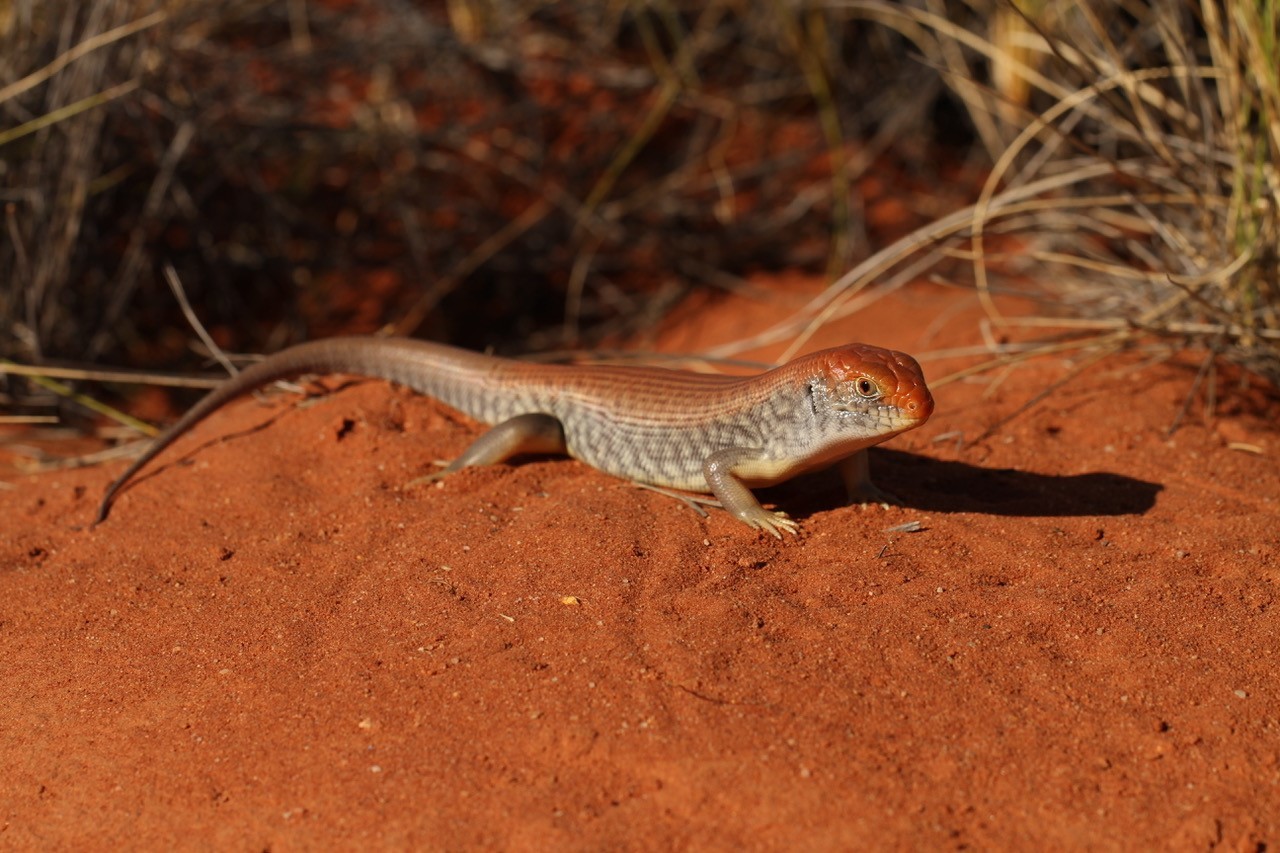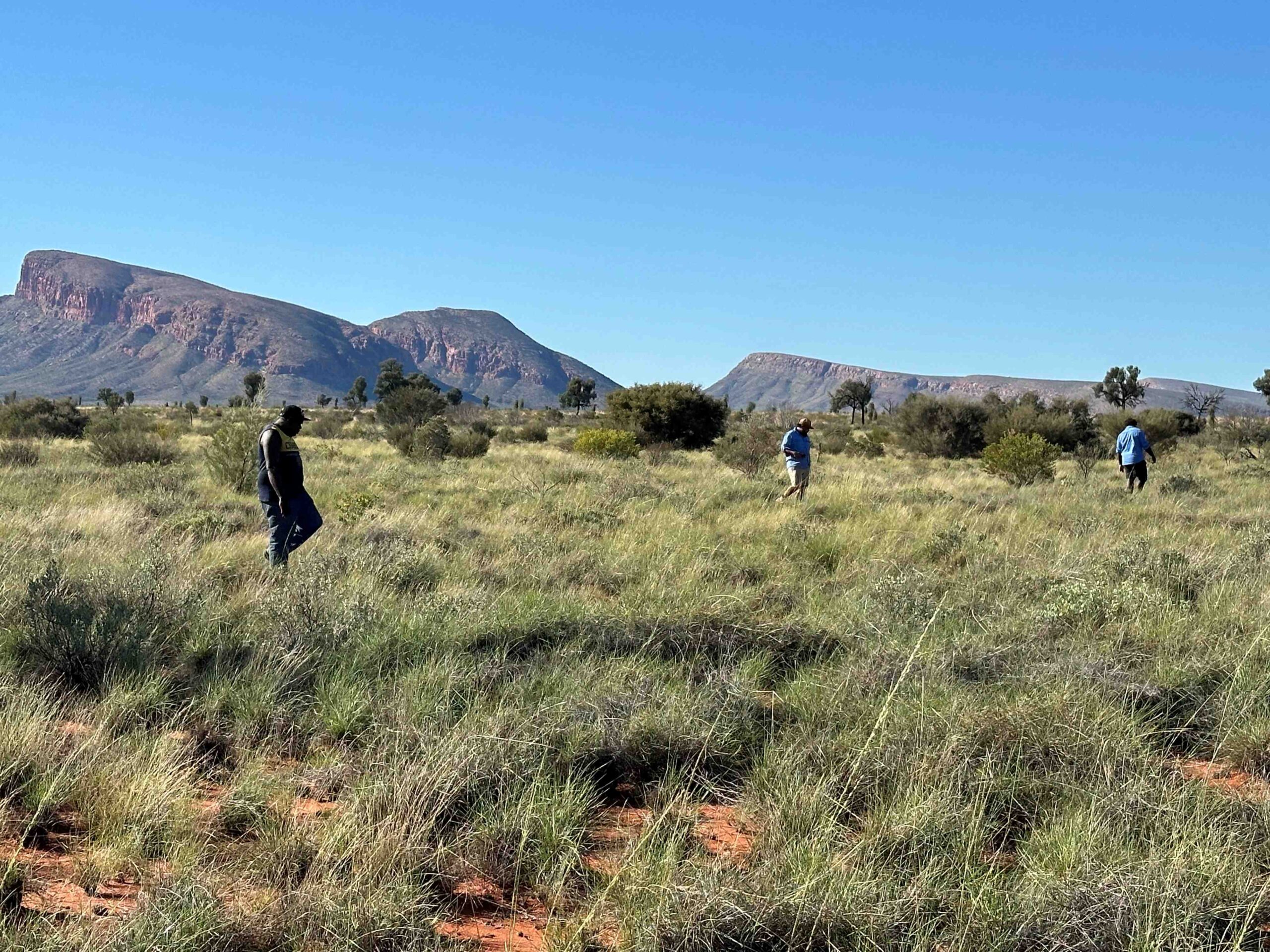Australian Desert’s largest coordinated threatened species monitoring program has kicked off!
Mulyamiji March, coordinated by the Indigenous Desert Alliance, is an annual event wherein 20 Indigenous ranger teams survey around 100 separate sites across three states for Great Desert Skink burrow systems.
Annual monitoring, which tracks national trends and informs recovery actions, is in its second years and will take place for at least another decade.
Australian Wildlife Conservancy (AWC) staff at Ngalurrtju are participating again, alongside our partners at the Central Land Council and Ngalurrtju Aboriginal Land Trust.
 J Schofield/AWC
J Schofield/AWC
Great Desert Skinks have many different language names across their range: Tjalapa to Luritja/Pintupi speakers on Ngalurrtju, Warrarna to the Warlpiri at Newhaven, Mulyamiji to the Manyjilijarra, and Tjakuṟa to many other desert communities. At Newhaven and Ngalurrtju we work with custodians to protect the species from their main threats: extensive fire and predation by feral cats and foxes.
This year, our team and partners will be searching for the species’ burrows across Ngalurrtju’s semi-saline spinifex sandplains, a vegetation community which covers 308 square kilometres of Ngalurrtju Aboriginal Land Trust.
To guide their search efforts across this vast distance, AWC staff reference an existing vegetation map to target preferred habitat – semi-saline spinifex sandplain with a history of low fire frequency.
 S Eldridge/AWC
S Eldridge/AWC
Shane McMasters, a Ngalurrtju custodian employed by AWC as a Land Management Officer, loves the opportunity to get people involved and engaged on their country:
“The work brings us all together, providing an opportunity to share stories and learn. We are learning about Tjalapa living on Ngalurrtju, chatting about why they are threatened and what we can do about it.”
We also look for evidence of cat and fox activity at burrows, as this data informs our land management program.
As part of this year’s program, the Ngalurrtju crew are hoping to trap a Greater Desert Skink, allowing rangers to see the species up close.
Regional ecologist Danae Moore says, “Some of the rangers we’re working with have never seen a Tjalapa. Getting an opportunity to hold a skink, seeing how amazing they are, helps us all to remember why we work hard in the conservation field.”
“Ultimately, our main objective at Ngalurrtju is to have custodians employed on their country and engaged in every aspect of the conservation partnership. People know their country well, but rediscovering some of the fauna that’s a little more cryptic is exciting for us all.”
Support Australian Wildlife Conservancy's science-led conservation work and safeguard the future of Australia's native species
Donate Now